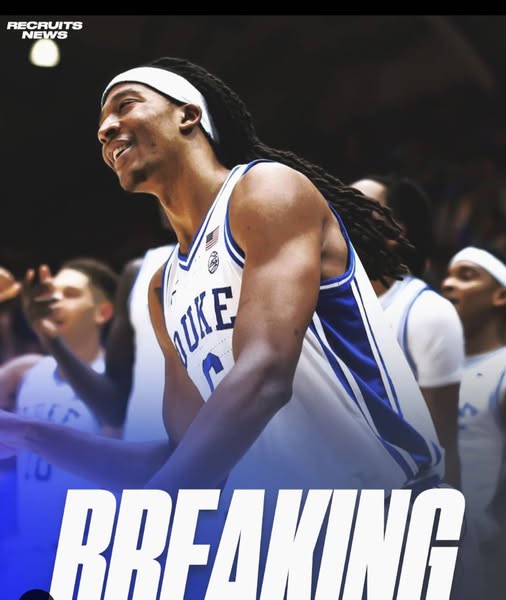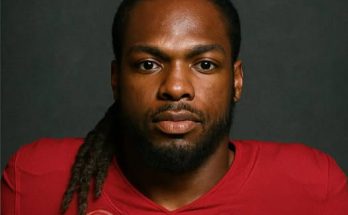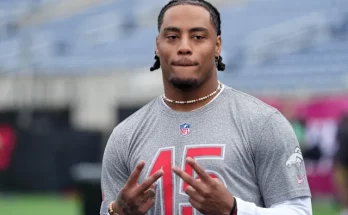In an era where college basketball has increasingly been shaped by the transfer portal, one-and-done talents, and early NBA declarations, Maliq Brown’s announcement that he will return to Duke for his senior season is not just refreshing—it’s a potential turning point for the Blue Devils’ 2025–26 campaign.
Brown, a rugged 6-foot-9 forward known for his relentless motor, defensive tenacity, and team-first mindset, made his announcement via social media, delivering a simple but powerful message: “One last ride. Let’s finish what we started. #GoDuke.” For a program undergoing another major roster transformation, Brown’s return offers the kind of stability and leadership that head coach Jon Scheyer needs as he steers Duke into yet another highly anticipated season.
A Veteran Presence in a Young Locker Room
Duke’s roster turnover has been a consistent theme under Scheyer, mirroring the broader trends of elite programs. With Cooper Flagg, the nation’s top freshman, expected to declare for the 2025 NBA Draft, and fellow top contributors like Jared McCain and Mark Mitchell having already moved on, Brown’s decision to return brings much-needed continuity.
At a program that regularly fields NBA-caliber talent barely a year out of high school, players like Brown—who grow through three and four-year collegiate careers—have become increasingly rare. And yet, they are the ones who often provide the glue that holds a roster together.
“Maliq is the kind of guy who doesn’t need the spotlight to make a difference,” said one ACC assistant. “He’s going to defend, rebound, and give you everything he’s got. Those guys win you games in March.”
Battle-Tested and Unfinished Business
Brown’s 2024–25 season was marred by a nagging shoulder injury that flared up multiple times, causing him to miss stretches of action and limit his minutes even when he was on the floor. Despite the setbacks, he managed to appear in 26 games, averaging 3.7 rebounds, 2.5 points, and 1.5 assists in just under 16 minutes per game.
Statistically, these numbers might not leap off the page, but they don’t tell the full story. Brown’s impact came in the form of timely rebounds, box-outs, hustle plays, and intelligent switches on defense. His versatility allowed Duke to guard multiple positions and enabled Scheyer to toggle between big and small lineups depending on the opponent.
Perhaps most notably, Brown pushed through pain during the postseason, returning after dislocating his shoulder to give the Blue Devils critical minutes during their Sweet 16 and Elite Eight games. Though Duke fell short of a Final Four appearance, Brown’s grit didn’t go unnoticed.
“Playing through that pain showed me a lot about who he is,” said Scheyer in a postseason press conference. “He’s not just a good player—he’s a leader. A warrior.”
The Emotional Core of Duke Basketball
Brown’s commitment to return also signals something deeper than just an additional body in the rotation. He represents the emotional heartbeat of the team. He is beloved by his teammates, respected by opponents, and admired by the Cameron Crazies, who have watched him develop year by year.
His return immediately positions him as the captain-in-waiting for the 2025–26 squad, particularly as the incoming freshman class adjusts to life in the ACC. While the Boozer twins—Cameron and Cayden—headline Duke’s incoming class, along with other five-star newcomers, it will be Brown’s leadership that sets the tone in practice and in the locker room.
“He’s that vocal guy who can pull someone aside and say, ‘This is how we do it at Duke,’” said a former teammate. “It’s not always about the dunks or the threes. Sometimes it’s about diving on the floor, setting a screen, or taking a charge.”
A Pillar on Defense
In a conference known for high-powered offenses and veteran playmakers, having a player like Brown anchoring the defense is a major asset. At his best, he can guard anyone from 3 through 5, slide his feet with wings, and battle with bigger post players.
With the Blue Devils expected to be guard-heavy next season, Brown’s ability to protect the rim, rebound at a high clip, and help on switches will be central to the team’s defensive scheme.
Last season, Duke ranked top-25 nationally in defensive efficiency, in part thanks to Brown’s off-ball instincts and low foul rate. He has become a defensive quarterback on the court—communicating, rotating, and contesting shots without drawing unnecessary whistles.
If he can stay healthy for a full season, he’s expected to play a much larger role—possibly even starting at the four or five depending on how the rotation shakes out.
Offseason Goals: Health, Strength, and Shooting
To elevate his game to the next level, Brown will need to address a few key areas this offseason. First and foremost is health. He’s expected to undergo a tailored recovery and strength-training program for his shoulder to avoid another season hampered by injury.
Second, he’ll look to expand his offensive game. Known primarily as a defender and rebounder, Brown has flashed the ability to hit mid-range shots and finish around the rim. Coaches are hopeful he can take and make more jumpers next season, particularly from 12–15 feet. If he adds a consistent elbow jumper or becomes a reliable finisher in pick-and-roll sets, his value increases exponentially.
“We want to see him take that next step,” said a member of Duke’s staff. “He has the work ethic. He has the heart. If his body holds up, he’s going to have a breakout year.”
A Fan Favorite and a Leader for the Next Generation
From his blue-collar work ethic to his connection with fans, Brown has always had the markings of a Duke fan favorite. He isn’t flashy. He doesn’t post highlight reels on social media. But his play embodies everything that fans and coaches respect—unselfishness, toughness, and commitment.
For the highly touted recruits entering the program, Brown serves as the example of what it means to wear the Duke jersey the right way. In a college basketball world that’s often filled with hype and hype alone, Brown offers substance.
The Blue Devils have championship aspirations every season, but those aspirations require leadership, and Brown’s return solidifies a leadership vacuum that could’ve emerged following the departure of the previous starting five.
A Season of Opportunity
With an exciting mix of incoming talent and returnees, including Brown, Tyrese Proctor (should he opt to stay), and sophomore guard Caleb Foster, Duke is once again poised to contend for an ACC title and a deep NCAA tournament run.
Brown’s return will likely elevate Duke’s preseason ranking as well, particularly among analysts who value experience and two-way versatility. ESPN’s Jeff Borzello and CBS Sports’ Matt Norlander have both emphasized the increasing value of veteran players in March Madness success stories.
The 2025–26 season could be Brown’s most impactful yet—not only for what he does on the court but for what he provides off it. A vocal, stabilizing presence in the huddle. A mentor in the film room. A motivator in the weight room.
One Last Ride
As college basketball evolves, it’s rare to see players commit to full careers at the same program. But Maliq Brown’s return reminds fans what college sports are all about: growth, loyalty, and the pursuit of unfinished business.
For Duke, his decision offers more than experience—it offers a heartbeat, a tone-setter, and a chance to go out with a banner. Brown didn’t need to come back. He chose to.



